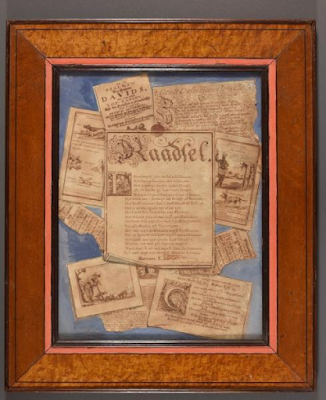Introduction
In the eighteenth century, several writing masters and painters in the Netherlands produced trompe l’oeil books: handwritten books that not only offer a meticulous imitation of a printed book (in most cases a traditional ABC book in black letter serves as a model), but also pretend to include loose, printed ephemera (images, songs, and texts, mostly in roman type), paper cuttings, or even a pair of reading glasses. The pages of the artefact are designed in such a way that the printed page from the original book and the loose papers that seem to lay inside the book together form a trompe l’oeil painting. This is done page after page, throughout the artefact. The effect is that the text on the pages is concealed by the painted images and thus rendered illegible. The book becomes a self-consuming artefact (or an artist’s book), in the sense that it undermines the very goal that it seems to serve, which is to be read. In this blog I will explore...



